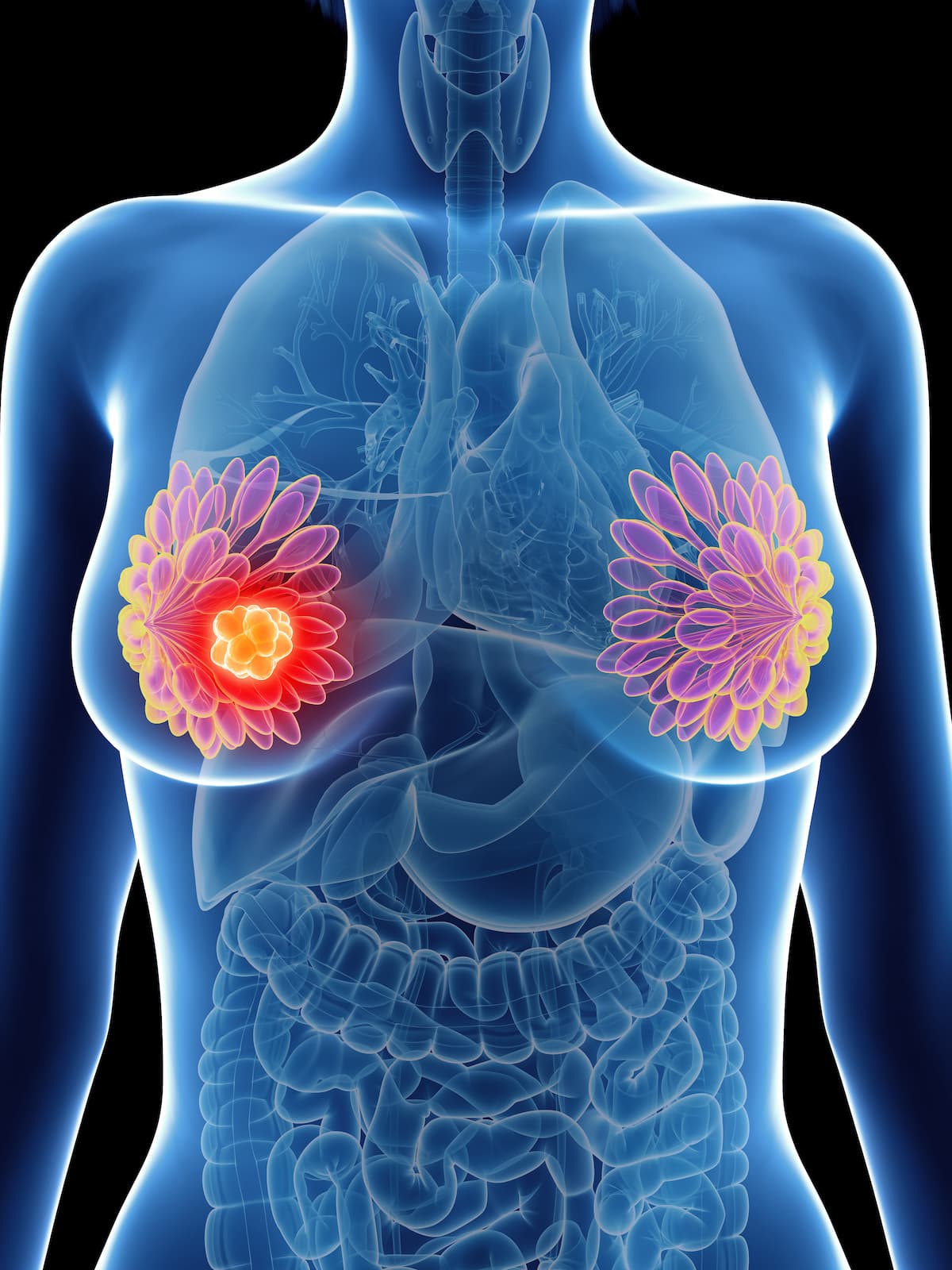FDA OKs T-DXd Companion Diagnostic in HER2-Low Metastatic Breast Cancer
The PATHWAY HER2 test has been approved to identify patients with HER2-ultralow metastatic breast cancer who may benefit from treatment with T-DXd.
The PATHWAY HER2 test has been approved to identify patients with HER2-ultralow metastatic breast cancer who may benefit from treatment with T-DXd.

The FDA has granted approval to the PATHWAY HER2 test as a companion diagnostic to identify patients with hormone receptor (HR)–positive, HER2-ultralow metastatic breast cancer eligible for fam-trastuzumab deruxtecan-nxki (Enhertu; T-DXd), according to a press release from the developer, Roche Diasgnostics.1
Previously approved for patients designated as having HER2-low disease, the PATHWAY HER2 test received approval for patients with even lower HER2 levels than previously classified in the HER2-low category. Since 2022, The PATHWAY HER2 test was the first and sole FDA-approved companion diagnostic for assessing HER2-low status.
The approval is supported by results from the phase 3 DESTINY-Breast06 (NCT04494425) trial, which showed that 20% to 25% of patients with HR–positive, HER2-negative breast cancer were classified as potentially having HER2-ultralow disease. Previous DESTINY-Breast06 trial findings were presented at the 2024 American Society of Clinical Oncology (ASCO) Annual Meeting.2
Additionally, among patients with HER2-low or HER2-ultralow status treated on trial, the median progression-free survival (PFS) was 13.2 months (95% CI, 12.0-15.2) with trastuzumab deruxtecan vs 8.1 months (95% CI, 7.0-9.0) with standard of care (SOC) of chemotherapy (HR, 0.62; 95% CI, 0.51-0.74; P <.0001).2
Additional data revealed that the 12-month overall survival (OS) rate among this patient population was 87.0% with T-DXd vs 81.1% with chemotherapy (HR, 0.81; 95% CI, 0.65-1.00). In patients with HER2-low and ultralow status, respectively, the 12-month OS rates were 87.6% vs 81.7% (HR, 0.83; 95% CI, 0.66-1.05; P = .1181) and 84.0% vs 78.7% (HR, 0.75; 95% CI, 0.43-1.29). The confirmed overall response rate (ORR) was 57.3% (95% CI, 52.5%-62.0%) in the investigational arm vs 31.2% (95% CI, 26.8%-35.8%) in the SOC arm.
“One in 8 women in the [US] will [have] invasive breast cancer in their lifetime,” Matt Sause, chief executive officer of Roche Diagnostics, said in the news release.1 “The rising incidence of metastatic breast cancer, particularly among younger populations, underscores the urgent need for new diagnostic options. The approval of our test for determining HER2-ultralow status offers new hope to patients by providing a possible path to HER2-targeted treatment where none existed before, helping clinicians transform outcomes for many [with] this challenging disease.”
The phase 3 DESTINY-Breast06 trial enrolled and randomly assigned 866 patients with HR-positive metastatic breast cancer with low HER2 expression, including a score of 1+ or 2+ on immunohistochemical (IHC) analysis and negative results on in situ hybridization, or ultralow HER2 expression to receive either trastuzumab deruxtecan (n = 436) or SOC chemotherapy (n = 430). Additionally, a total of 713 patients were classified as having HER2-low disease, and 153 were classified as having HER2-ultralow disease, entailing IHC 0 with membrane staining.
Patients were treated with 5.4 mg/kg of intravenous trastuzumab deruxtecan every 3 weeks or investigator’s choice of chemotherapy. Chemotherapy options included oral capecitabine, intravenous paclitaxel, or intravenous nab-paclitaxel.
The primary end point of the study was PFS in the HR-positive, HER2-low population.3 Secondary end points included overall survival (OS), PFS in the intent-to-treat (ITT) population, OS in the ITT population, ORR, duration of response, and safety.
Any-grade treatment emergent adverse effects (TEAEs) were reported in 98.8% of the T-DXd arm and 95.2% of the SOC arm.4 Serious TEAEs were experienced by 20.3% and 16.1% of the respective arms, with common treatment-related TEAEs in the respective arms including nausea (65.9% vs 23.5%), fatigue (46.8% vs 34.3%), and alopecia (45.4% vs 19.4%). Furthermore, there were 3 grade 3 interstitial lung disease or pneumonitis events (0.7%), 3 grade 5 AEs (0.7%), and no grade 4 AEs in the T-DXd arm as determined by an independent adjudication committee.
The FDA approved T-DXd in unresectable or metastatic HER2-low/ultralow breast cancer previously treated with at least 1 endocrine therapy type in the metastatic setting in January 2025.5
References
- Roche receives FDA approval for the first companion diagnostic to identify patients with HER2-ultralow metastatic breast cancer eligible for ENHERTU. News release. Roche Diagnostics. January 30, 2025. Accessed February 3, 2025. https://tinyurl.com/5n8ebah8
- Curigliano G, Hu X, Dent RA, et al. Trastuzumab deruxtecan (T-DXd) vs physician's choice of chemotherapy (TPC) in patients (pts) with hormone receptor-positive (HR+), human epidermal growth factor receptor 2 (HER2)-low or HER2-ultralow metastatic breast cancer (mBC) with prior endocrine therapy (ET): primary results from DESTINY-Breast06 (DB-06). J Clin Oncol. 2024;42(suppl 17):LBA1000. doi:10.1200/JCO.2024.42.17_suppl.LBA1000
- Study of trastuzumab deruxtecan (T-DXd) vs investigator's choice chemotherapy in HER2-low, hormone receptor positive, metastatic breast cancer (DB-06). Updated January 15, 2025. Accessed February 3, 2025. https://tinyurl.com/ytucabrs
- ENHERTU demonstrated a median progression-free survival of 13.2 months in HR positive, HER2 low and HER2 ultralow metastatic breast cancer following one or more lines of endocrine therapy. News release. Daiichi Sankyo. June 2, 2024. Accessed February 3, 2025. https://tinyurl.com/yb3u7y3z
- Enhertu approved in the US as first HER2-directed therapy for patients with HER2-low or HER2-ultralow metastatic breast cancer following disease progression after one or more endocrine therapies. News release. FDA. January 27, 2024. Accessed February 3, 2025. https://tinyurl.com/5n8ab8sk
Newsletter
Stay up to date on recent advances in the multidisciplinary approach to cancer.